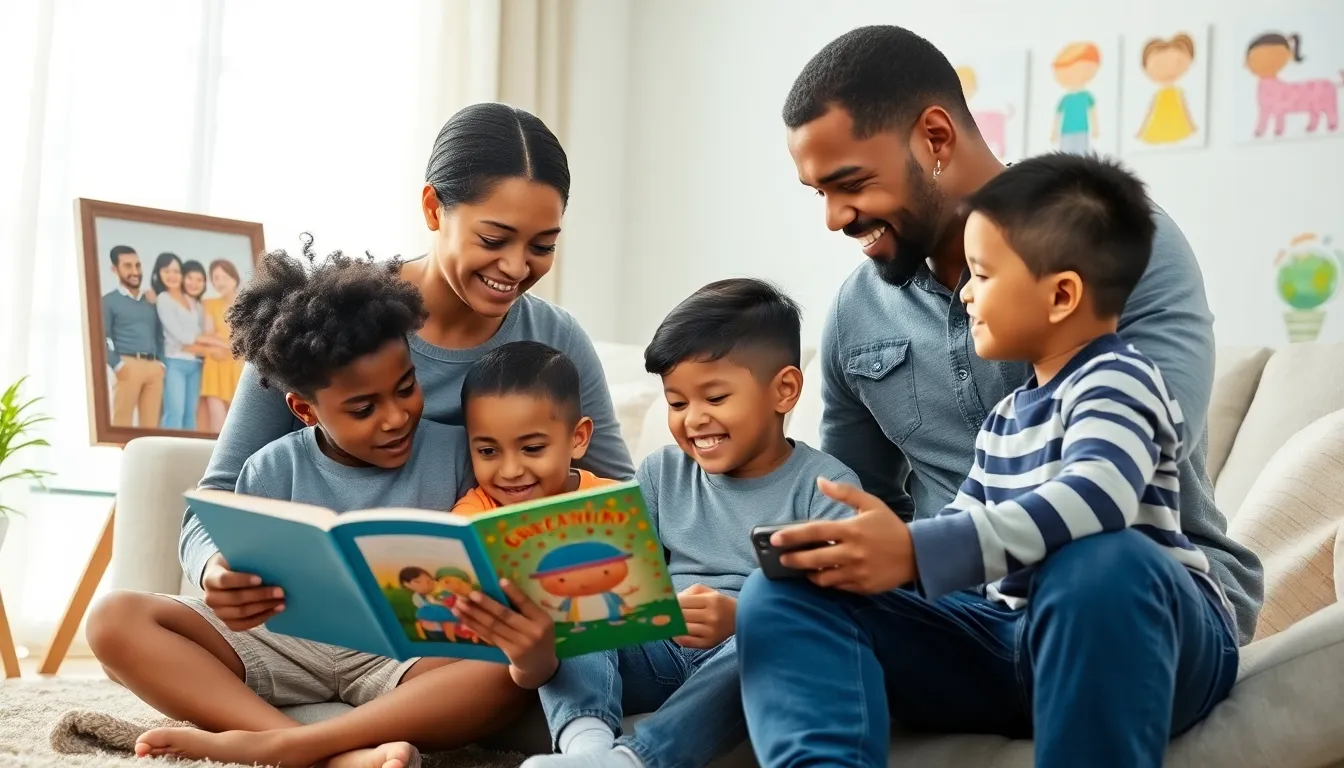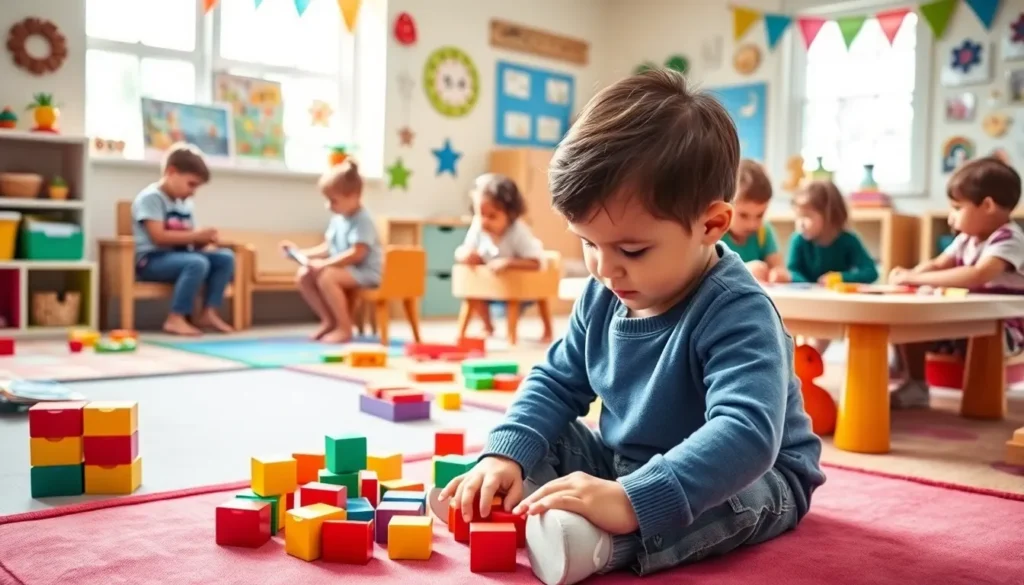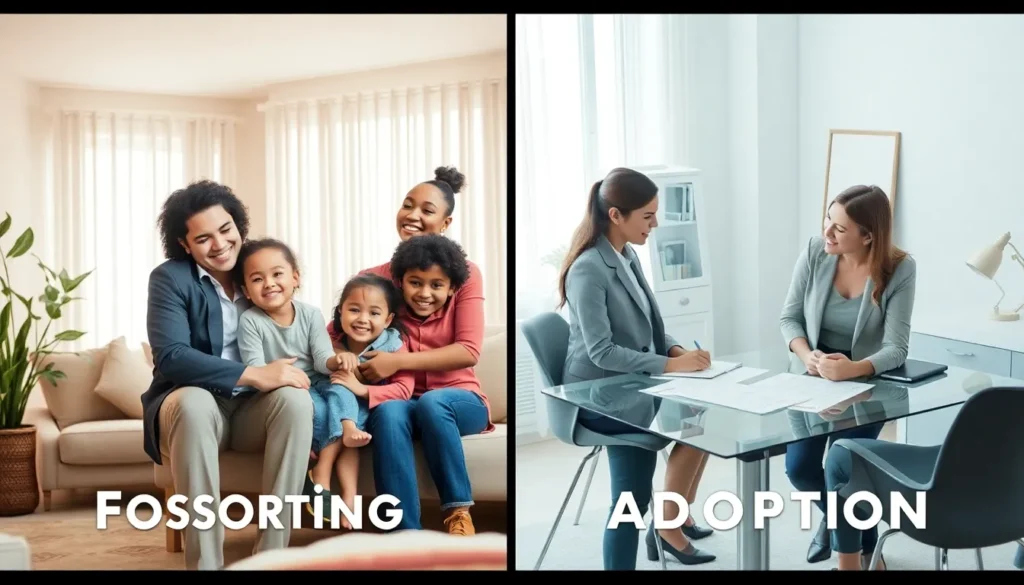Fostering and adoption are two crucial avenues for providing loving homes to children in need, but they often get confused. Think of it like choosing between a short-term lease and a lifelong mortgage. Both options involve deep commitment and love, yet they differ significantly in structure and permanence. Ready to jump into the nitty-gritty of each? Let’s unmask these two essential pathways to parenthood.
Table of Contents
ToggleUnderstanding Fostering

What Is Foster Care?
Foster care serves as a temporary solution for children who can no longer live with their biological families. When a child enters foster care, they are placed with foster parents who provide a safe and nurturing environment. The primary objective is to stabilize the child’s life until they can return home or find a permanent solution, like adoption.
The Role Of Foster Parents
Foster parents play a vital role in supporting children’s emotional and physical needs during this transient phase. They become mentors, caregivers, and advocates, coordinating with social services to ensure the child receives necessary services. Their mission is to create a sense of stability and normalcy amidst uncertainty, helping every child feel valued and loved.
Duration And Stability In Fostering
Unlike adoption, the duration of fostering is indefinite. Children may stay with foster families for weeks, months, or even years, depending on their individual circumstances. This lack of stability can be tough for kids, creating emotional challenges while awaiting a long-term solution. Yet, it’s also a chance for the child to grow and heal, building bonds that can last a lifetime regardless of the outcome.
Understanding Adoption
What Is Adoption?
Adoption is a permanent arrangement that legally transfers parental rights from birth parents to adoptive parents. Once finalized, the adoptive parents become the child’s legal guardians, and the child becomes part of their new family. This path seeks to provide lifelong stability and belonging for children in need.
Types Of Adoption
There are several types of adoption, each with unique processes and implications:
- Domestic Adoption: Involves adopting a child from within the same country. This can further branch into agency adoptions or private adoptions.
- International Adoption: This type involves adopting a child from a different country, often requiring additional legal processes due to varying international laws.
- Stepparent Adoption: A stepparent may adopt their partner’s child, solidifying the family bond.
- Foster Care Adoption: Some foster parents may choose to adopt their foster children, providing them with a permanent home.
The Role Of Adoptive Parents
Adoptive parents are responsible for raising their child, offering support, guidance, and unconditional love. Their role extends beyond just parenting: they also navigate the emotional complexities that come with adoption, like discussing the child’s background and addressing any feelings of loss or abandonment.
Legal Aspects Of Adoption
The adoption process requires legal considerations that are often complex and time-consuming. It usually demands thorough background checks, home studies, and court approval before an adoption can be finalized. After the process is complete, parents receive a legal decree affirming their rights over the child, which starkly contrasts with the temporary nature of fostering.
Key Differences Between Fostering And Adoption
Legal Status And Parental Rights
The most glaring difference lies in the legal status. In fostering, parental rights remain with the biological parents or the state, as the arrangement is temporary. In contrast, adoption signifies a complete transfer of parental rights to the adoptive parents, making them fully accountable for their child’s welfare.
Duration Of Care And Commitment
Duration is another critical factor. Fostering can lead to an uncertain timeline where the child may eventually return to their biological parents or move in with another family. Adoption, but, is rooted in permanence, providing the child with a secure and stable environment for life.
Emotional Considerations For Children
The emotional ramifications differ significantly as well. Foster children may experience anxiety or instability while awaiting permanent arrangements. In contrast, adopted children generally view their situation as more permanent, allowing them to develop deeper ties to their new families, easing feelings of abandonment.
Support Systems And Resources
Support Available For Foster Parents
Foster parents typically receive various forms of support, including training and financial assistance. Many states offer monthly stipends to help with costs related to the care of foster children. Also, foster parents can access counseling services and support groups, fostering a sense of community.
Support Available For Adoptive Parents
Adoptive parents also find themselves supported through various resources, including legal guidance and financial assistance for adoption-related expenses. Many organizations offer workshops and peer support to help families navigate the complexities of adopting, ensuring they have the tools needed to thrive.




